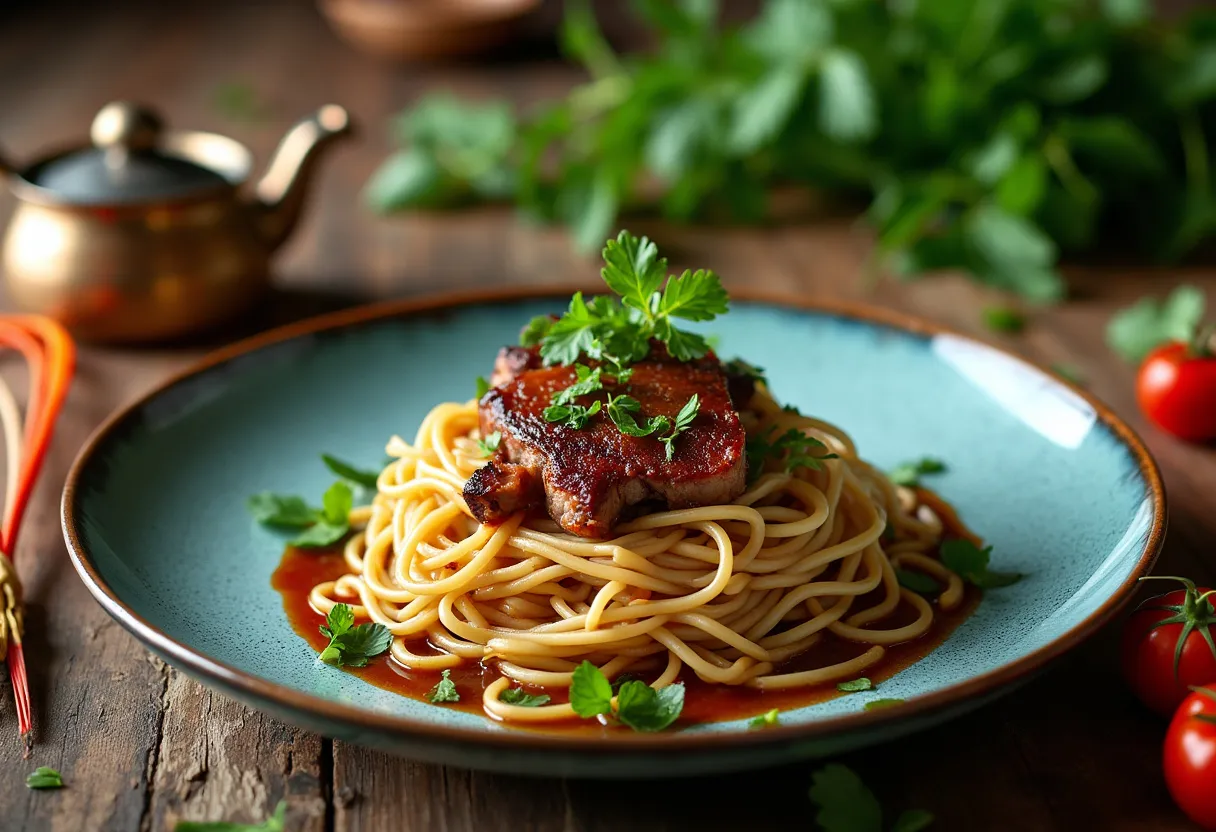
Mastering the Art of Vietnamese-French Fusion: A Guide to Balancing Flavors and Textures
Published on 9/21/2024
Isabella Nguyen • 9/21/2024
Are you intrigued by the aromatic burst of pho or the crisp bite of banh mi? Let me take you on a culinary journey where the vibrant culture of Vietnam meets the refined elegance of France. As Isabella Nguyen, a sous chef specialized in Vietnamese-French fusion, I'm thrilled to share insights on creating harmony between these two distinct cuisines.
The Core Principles of Fusion Cuisine
Fusion cooking isn't merely about mixing ingredients from different cuisines; it's about understanding the essence of each flavor and how they complement one another. Here are some core principles to guide you:
- Balance Flavors: In Vietnamese cuisine, ingredients like fish sauce, lime, and lemongrass are pivotal for balance. In French cuisine, it's about achieving flavor depth with butter, wine, and herbs.
- Contrast Textures: Think of crispy baguettes meeting silky noodles. Fusion dishes thrive on texture conflicts and complements.
- Create Vivid Palettes: Both cuisines celebrate the visual aspect of food. The vibrant colors of fresh herbs and colorful vegetables bring dishes to life.
Embodying Techniques and Ingredients
Combining culinary techniques can elevate new creations. Here’s how to integrate both traditional methods and craft new concoctions:
- Sauté and Stir-fry: Harness the intense flavors of a quick French sauté along with the high-heat Vietnamese stir-fry technique for irresistible results.
- Stewing and Braising: Use a blend of herbs and spices in a slow-cooked French stew, enriched with Vietnamese staples like star anise.
Exploring Vietnamese and French Staples
It’s crucial to understand the core ingredients that define each cuisine. Here's a breakdown:
Vietnamese Essentials
Vietnamese cooking revolves around key ingredients such as fish sauce, rice papers, hoisin sauce, and plenty of fresh ingredients like basil and mint.
French Classics
For French, the focus often includes ingredients like cream, wine, cheese, and experimenting with delicacies such as truffles.
Final Thoughts: A Culinary Adventure
As you stand over your kitchen counter, mixing the hum of your cooking timer with aromatic wafts from the stovetop, you’re embarking on a journey through two rich culinary histories. Whether you're savoring a Vietnamese-French crepe with lemongrass chicken or a pho-infused ratatouille, remember that fusion is about more than taste; it’s a cultural exchange on a plate.
To explore more on bringing these flavors alive in your kitchen, stay tuned to my culinary adventures on my blog, where I continue to unveil the world of Vietnamese-French fusion.
Isabella Nguyen
Sous Chef and Culinary Writer | I've been cooking
Isabella grew up in Hanoi, Vietnam, where her family operated a small noodle shop. She learned the art of Vietnamese cooking from her parents, particularly the importance of balancing flavors and textures in traditional dishes like pho and banh mi. After moving to France to study at Le Cordon Bleu, Isabella fell in love with French culinary techniques and began fusing them with the flavors of her Vietnamese heritage. Now working as a sous chef in Paris, she creates Vietnamese-French fusion dishes and writes a popular food column on modern fusion cuisine.